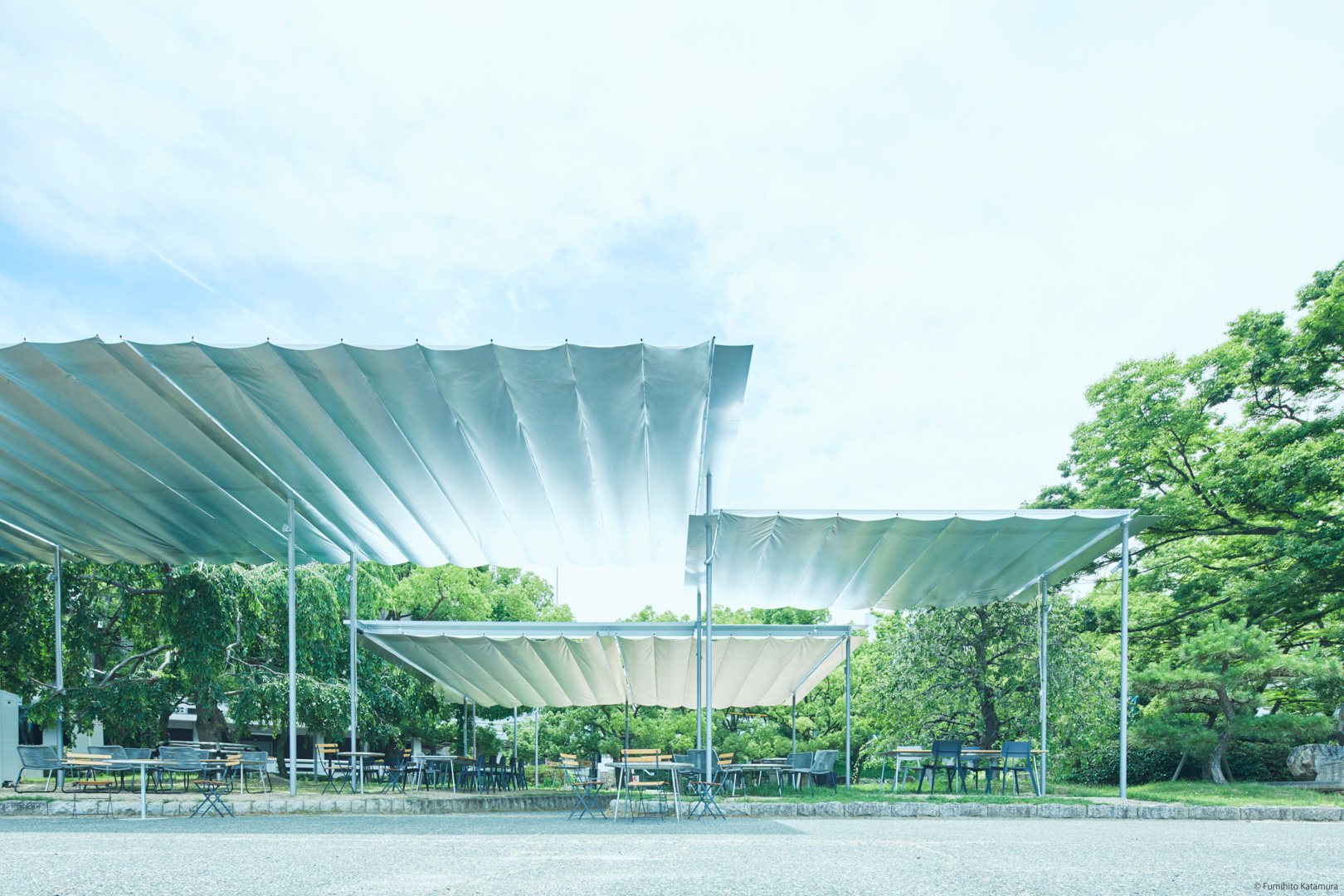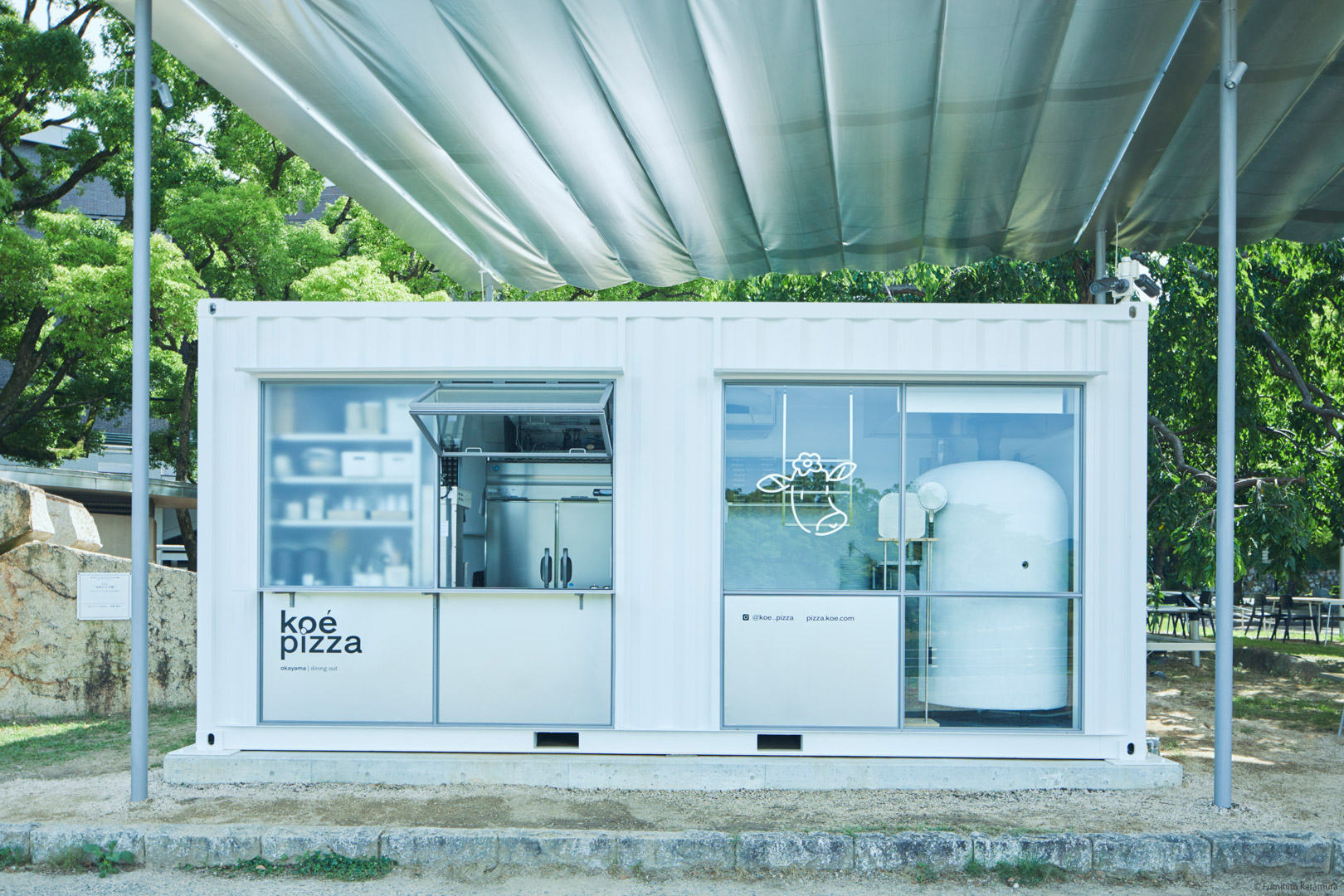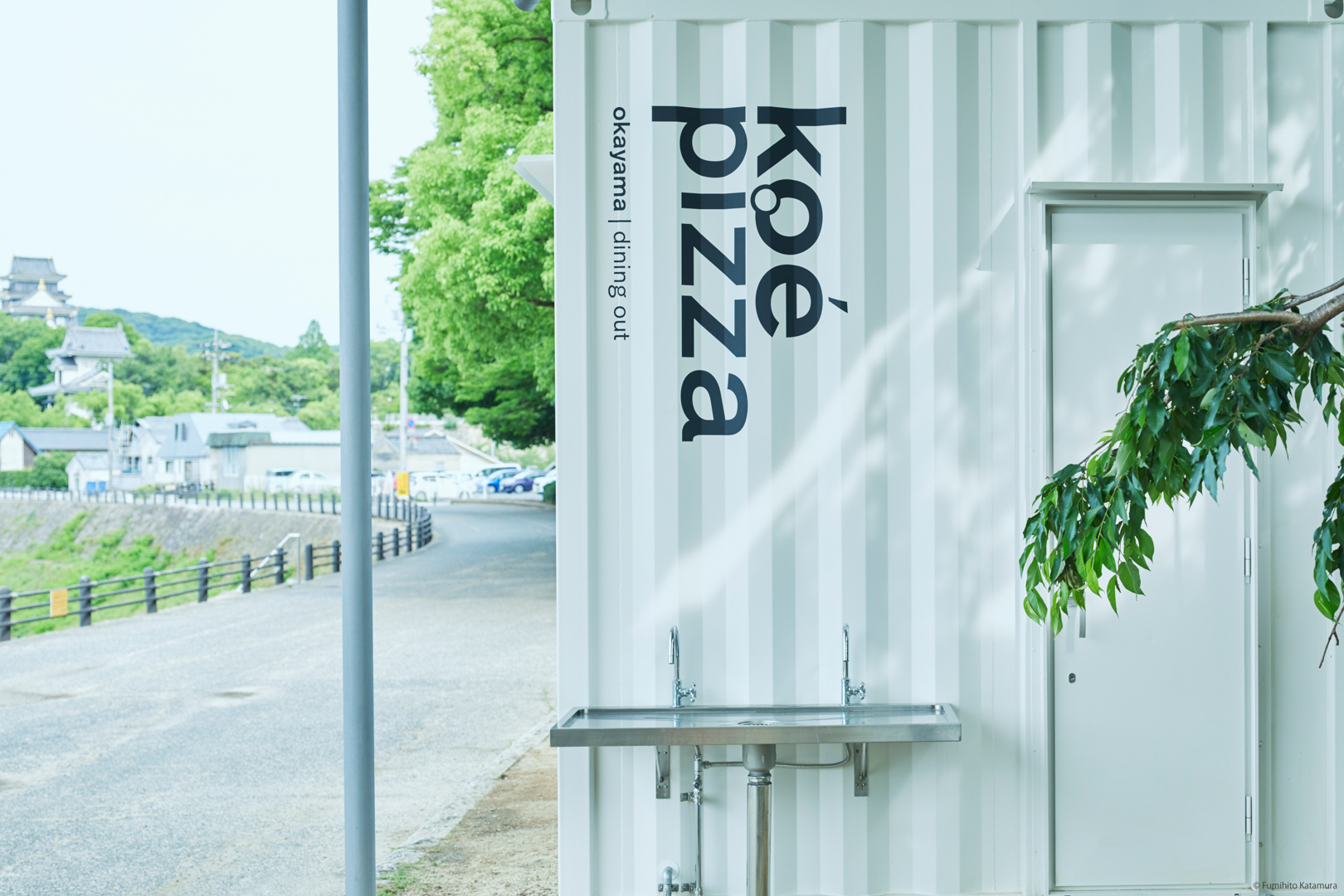岡山市目前正在進行一項社會實驗企劃。內容是以三年為期限,將公園的一部分租借給民間企業開設戶外餐廳。建地所在的公園位於岡山市內觀光、文化設施集中的區域。
此地的環境可說是極其優美,因此希望能夠串連起散落於公園裡的美麗斷片,規劃出以最小的人工介入便可展現其尚未被發掘之價值的建築形式。
公園位於岡山後樂園的對岸,因緊鄰蛇行的旭川河道外緣,所以可以感受到河川所帶來的舒適涼風。我們在涼風流入之處配置了會隨風搖曳的布幕屋頂,蒸鍍了鋁的篷布屋頂不僅能夠遮陽,也可以映照出周圍的顏色。因公園中隨處可見經年累月所孕育的盎然綠意,便在樹木之間以立體的形式撐起了各式不同高度、大小的屋頂穿插於其中,打造出一個猶如被綠色圍牆所包覆,身處室內的空間。另一方面,因既有的步道原本就像是行人來去穿梭的十字路口,我們並沒有將屋頂的範圍侷限於店鋪的佔用範圍或是建地的分界線,而是讓其延伸至步道,路過的行人會在不知不覺中進入同一個屋頂,進而傳達我們希望這個建築不拘小節的一面。
此類屋頂因開闔式的構造,在法律上並沒有被歸為「建築」。也因為跳脫了框架,反而不用受制於沒有必要的界線及制度,能夠很直接地應對四周的環境。因應而生的「新富足」,讓我們可以置身綠意之中,感受風、品嘗酒、眺望河岸美景、大啖佳餚。用餐時甚至可見身旁有帶狗散步的人與店員開心談笑,彷彿從一個不屬於任何人的公園,成為紛至沓來的公園,再轉變為一個「屬於自己」的公園。
As a social experiment, Okayama City rented a part of Ishiyama Park to a private business operator for 3 years to create an outdoor restaurant. The park is located in an area of Okayama City where tourist and cultural facilities are concentrated.
First and foremost, the environment is wonderful. Therefore, I decided to think of an architectural figure that connects beautiful fragments of the environment and reveals the value of sleeping in this place with a minimum of operations.
The park is opposite Okayama Korakuen and just outside the meandering Asahikawa River, so a pleasant breeze is flowing from the river. I decided to place a curtain roof that sways in the wind at a place that would be the entrance to the wind of the river. The aluminum-deposited membrane roof casts shadows and it reflects the surrounding colors. In addition, as greenery flourish abundantly over many years in the park, roofs of various heights and sizes were floated so as to sew the gaps between the trees three-dimensionally, and surrounded by green walls. I created a space like a room. The existing road is an intersection where various people pass. The roof covers the road beyond the occupied area of the store and the boundary of the site allowing passerby to be sheltered by the same roof unknowingly. I tried to make the architecture with grandeur and welcoming.
Since this roof is operable, it is not treated as architecture in a legal sense. By removing this legalistic limitation, we remove unnecessary institutional boundaries and behavior towards the environment. A new sense of freedom is born. Visitors can drink wine and enjoy a delicious meal while feeling the river breeze in the green and admiring the beautiful scenery along the river. As the meal progress, the clerk and the person walking the dog are talking happily. The park that doesn't belong to anyone will change to a park where someone comes, and it will transform into a park for everyone.


